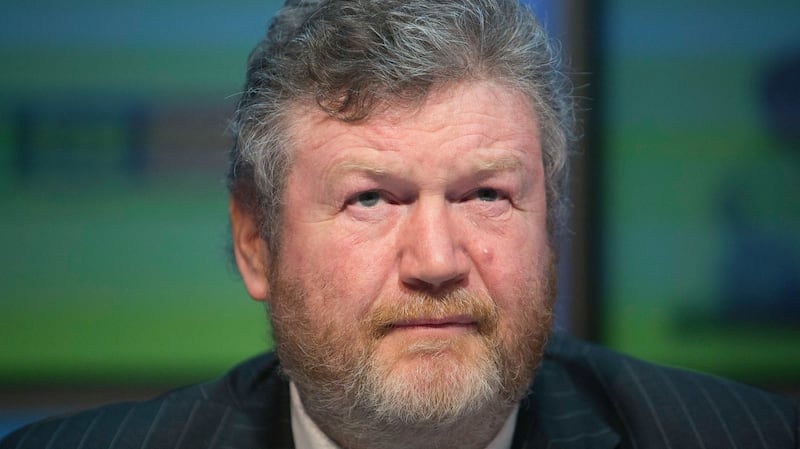Members of the Irish Beard and Moustache Association will have their own views, but my political beardies of the election are Fine Gael's James Reilly and Sinn Féin's Gerry Adams.
Adams's well-groomed plumage invites the inference that the TD is seldom far from a book-lined study, while Reilly's livelier facial garnish evokes a maritime feel, its owner perhaps happy in the wheelhouse, steering a tramp steamer through a squall. To their credit, however, neither Reilly nor Adams looks like a cross between Karl Marx and ZZ Top's Billy Gibbons.
Just how many more delegations of Victorian mill owner can the nation’s pubs and coffee shops take? Such is the current pursuit of hirsuteness that Reilly’s clean-shaven successor may soon draft legislation to de-beard hospitalised hipsters. This is because I’ve learned that in Victorian times, men’s beards were routinely shaved off in hospitals as an infection-control measure.

According to art historian Lucinda Hawksley, in the 1890s it was found that bacteria lurking in facial hair could spread disease in hospitals. So the start of the 20th century heralded a hospital blanket ban on bearded patients “because it was discovered that the spittle that they stored could transfer diseases such as consumption”.
Might beardies, though, harbour sexist attitudes as well as dormant bacteria? The association between men's sexist attitudes and facial hair is the title of an article published last year in the journal Archives of Sexual Behavior.
In their analysis of an online survey of 223 men from the United States and 309 men from India, Australian researchers found that “men with facial hair were significantly higher in hostile sexism than clean-shaven men . . . ” They further suggest that “ sexist men choose to grow facial hair because it maximises sexual dimorphism and augments perceived masculinity and dominance”.
I suspect that Germaine Greer won't quibble with that as far as early hipster George Bernard Shaw is concerned. In a Guardian blog (January 23rd, 2011), Greer wrote of the playwright that he was a sophist "who liked to convince himself of the rightness of views that were indefensible . . . By my computation feminists have had about as much time for Shaw as he had for them, which strikes me as fair enough."
But at least an efflorescence of facial and body hair enhances male attractiveness – doesn't it? Writing in Archives of Sexual Behavior (August 21st, 2015), researchers considered the role of facial and body hair distribution in women's judgments of men's sexual attractiveness. They pointed out that these traits are hormone-dependent, their expression requiring an enzyme to catalyse the conversion of testosterone into dihydrotestosterone.
In an online survey of 3,805 women, researchers sought their judgments on photographs of males with varying degrees of hirsuteness. One finding was that men sporting a continuous hair distribution from the lower jaw, connecting the moustache with the cheeks, were deemed more sexually attractive than those with a patchier acreage.
Another observation was that hairy men were less attractive than when clean shaven, apart from those whose areolae, pectorals and sternums were colonised with hair.
The researchers also cited a study that found that when there were more men looking for a potential mate, a greater proportion of them were bearded. The implication is that when competition for a female mate increases, growing a beard represents one way of asserting masculinity.
This, in turn, might influence the circumstances under which women rate the attractiveness of beards “so that beards receive higher attractiveness ratings when they are rare than when they are common”.
I would speculate that the current ubiquity of beards, not all of which may be rated highly by prospective female mates, may explain why many hipsters don't seem playful, happy-go-lucky types. As Dr Barnaby Dixson and Dr Paul Vasey report in the journal Behavioral Ecology, "the beard appears to augment the effectiveness of human aggressive facial displays".
True, Starbucks is hardly a primeval savannah, but the competition for females may be stiffer than a Grizzly Adams beard comb.
While hairiness is celebrated by hipsters, however, it can be a problem for some women. A recently published piece in Obstetrics, Gynaecology and Reproductive Medicine found that hirsutism – where a female develops thick, male-pattern androgen-dependent hair growth – can affect 5-10 per cent of women of reproductive age, its incidence being higher among those of African or Mediterranean descent.
The commonest cause of hirsutism in clinical practice is polycystic ovary syndrome; its medical treatment is restricted to patients who don’t wish to become pregnant and includes oral contraceptives, anti-androgen drugs and insulin-lowering agents.
















